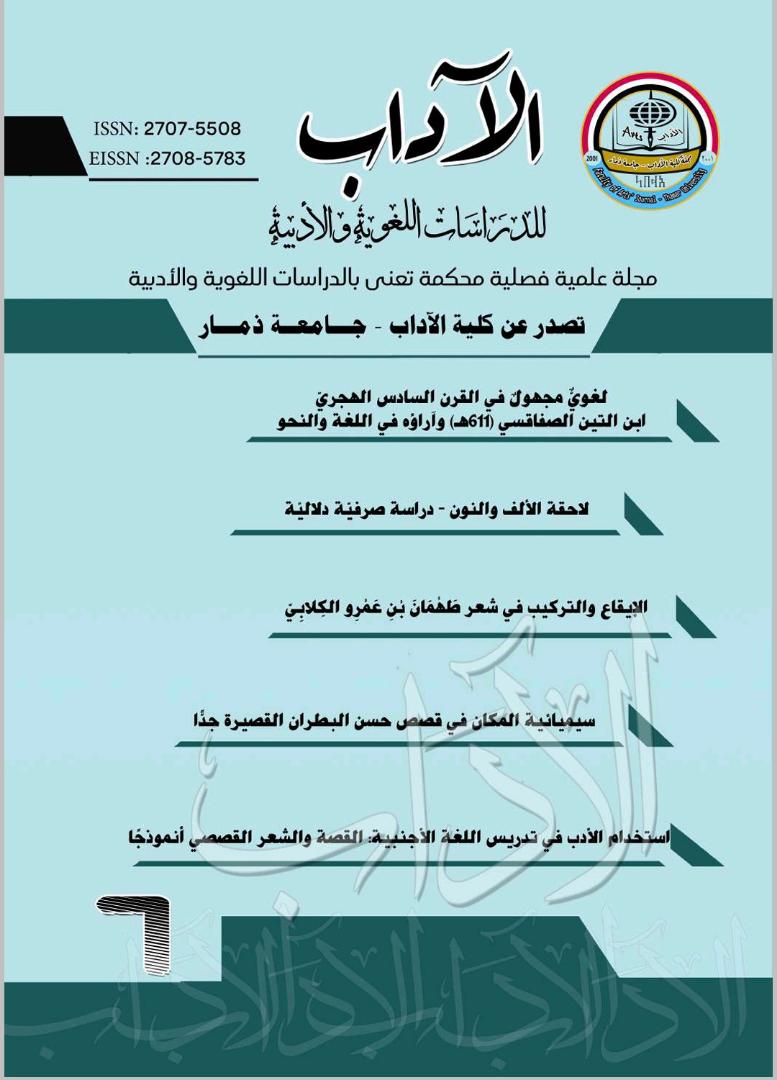The Separation Pronoun in the Holy Qur’an: A Grammatical Semantic Study
DOI:
https://doi.org/10.53286/arts.v1i7.271Keywords:
Separation Pronoun, Holy Quran, Study, Syntax, SemanticsAbstract
This study explores the separation pronoun in the Holy Quran, in terms of presentation and analysis. It traces its positions in various forms and deals with the multiplicity of its structural and semantic functions, and its occurrence in some contexts performing structural and semantic functions together. Sometimes, it does more than a semantic function in one structure. We have noticed that it can combine the function of restriction and assertion in some Qur'anic contexts. The research also has addressed a problem that lies in monitoring the purposes of the separation pronoun synthetically and semantically, through tracing its contexts in the Holy Qur’an, and the various functions it performs. The two functions of restriction and limitation, and the function of assertion are the subject and purpose of this aspect. The most important objective is to reveal the purposes of this type of pronouns. Among the most important findings of the study is that the phenomenon of the separation pronoun and its stylistic purposes are the most obvious aspects of the semantic syntactic interaction. The study is of two sub-topics: The first discusses the definition of separation pronoun and its concept; however, the second discusses the semantic functions of the separation pronoun.Downloads
Downloads
Published
How to Cite
Issue
Section
License
Copyright (c) 2021 مجاهد منصور مصلح

This work is licensed under a Creative Commons Attribution 4.0 International License.
Copyright and Licensing
copyright is retained by the authors. Articles are licensed under an open access Creative Commons CC BY 4.0 license, meaning that anyone may download and read the paper for free. In addition, the article may be reused and quoted provided that the original published version is cited. These conditions allow for maximum use and exposure of the work.



